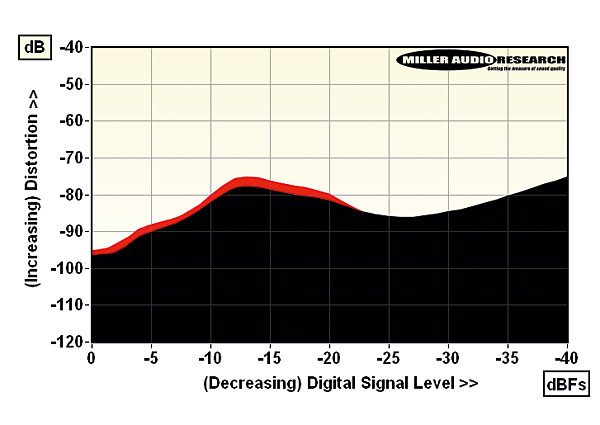Lumin T3 Music Server/DAC LeedH Processing
Digital volume controls have generally had a bad press since the arrival of variable-output DACs, but while the technical compromises inherent in the earliest implementations most certainly had a subjective (audible) consequence, that's not always the case with today's advanced processing software. Before we dive a little deeper, I'll clarify that we are talking about digital attenuators here rather than either digital volume with gain or the digitally-governed analogue attenuators used in many of today's amplifiers. The earliest digital controls were blunt instruments, lopping full bits of data from each, in those days, 16-bit words to achieve incremental reductions of up to 6dB. The greater the attenuation the greater the error in resolution/linearity and, as this quantisation error was correlated to the signal, it manifested as a further increase in harmonic distortion as the 'volume' was reduced.

Latterly, a form of digital dither was added during D/A conversion to randomise these fixed errors so they appeared as a uniform increase in noise rather than distortion harmonics. Nowadays it's more common for, typically, 24-bit audio data to be processed in 32-bit or 64-bit wordlengths so both the volume coefficient and audio sample may be accommodated with a reduced rounding error. LeedH processing, the brainchild of Gilles Milot (www.acoustical-beauty.com) takes a different approach to minimising rounding errors without DSP-heavy overhead. Instead of striving for precise steps in level, LeedH calculates the best volume coefficient to deliver approximate steps in level (for example –1.2dB, –1.8dB, –3.25dB and –4.08dB in place of –1.0dB, –2.0dB, –3.0dB and –4.0dB, respectively) in order to realise the minimum rounding error. Dither is also still applied to decorrelate any residual distortions [inset Graph shows THD vs. level at volume position '60%', or –20dB, with and without LeedH processing (black/red)]. So, while the 'imprecise' volume steps will not be troublesome, there is evidently a small but measurable improvement in distortion. PM























































